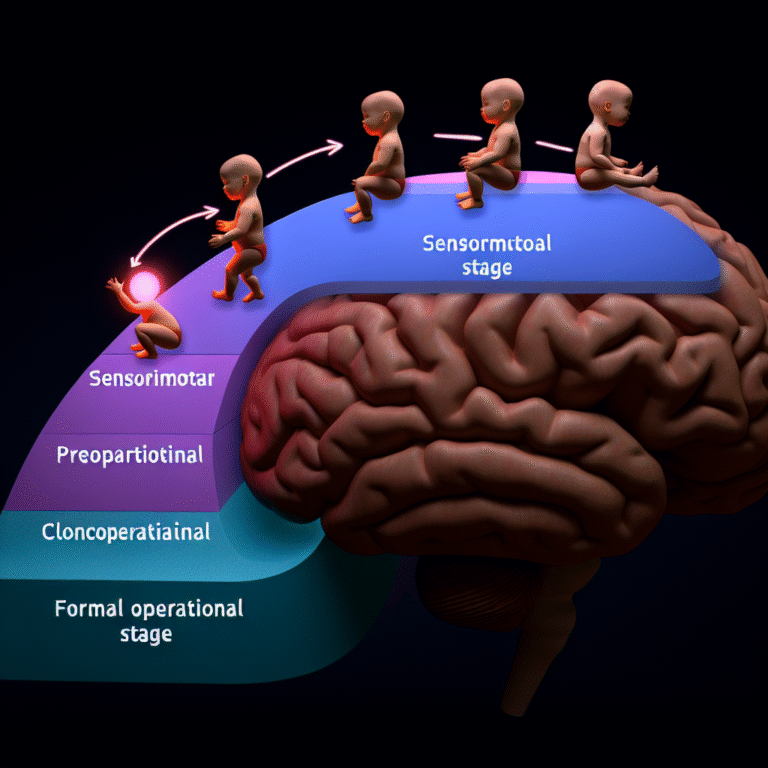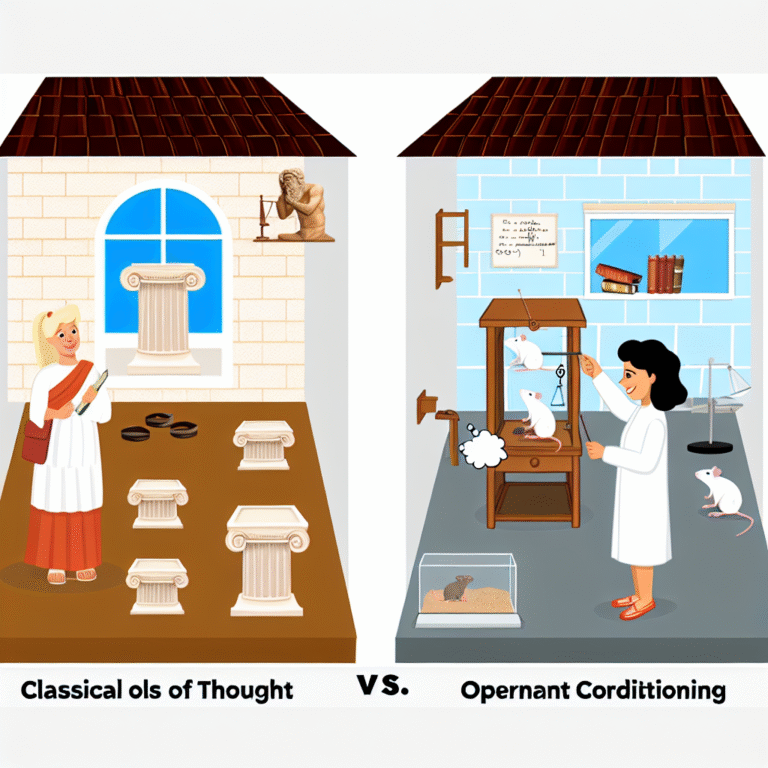
Building Stronger Bonds: Practical Applications of Attachment Theory in Romantic Relationships
Introduction
In the realm of romantic relationships, understanding the underlying dynamics can unlock pathways to deeper connections and greater satisfaction. With intimacy often hinging on the way we relate to our partners, it becomes vital to explore and apply psychological frameworks that shed light on these interactions. One such framework is attachment theory, a psychological model that explains how our early bonds with caregivers shape our emotional responses, behaviors, and relationships later in life. In this article, we will delve into Building Stronger Bonds: Practical Applications of Attachment Theory in Romantic Relationships, exploring how recognizing these patterns can lead to healthier, more fulfilling partnerships.
Attachment theory, initially developed by psychologist John Bowlby and further expanded by Mary Ainsworth, categorizes attachment styles into four main types: secure, anxious, avoidant, and disorganized. By understanding these styles and their implications, couples can foster deeper connections, enhance communication, and mitigate conflicts. This article will dissect these styles, provide practical applications of attachment theory to cultivate stronger bonds, and illustrate each point with real-life case studies.
Join us as we navigate the intricacies of emotional attachments and their profound impact on romantic relationships, ultimately promoting a journey toward healthier, happier love lives.
Understanding Attachment Styles
What Are Attachment Styles?
Attachment styles refer to the individual methods we use to form emotional bonds and interact with others in relationships. They are formed in childhood but manifest distinctly in adult romantic relationships. Understanding your attachment style and that of your partner is a fundamental step toward Building Stronger Bonds: Practical Applications of Attachment Theory in Romantic Relationships.
Table 1: Attachment Styles Overview
| Attachment Style | Characteristics | Impact on Relationships |
|---|---|---|
| Secure | Comfortable with intimacy and independence | Likely to have stable, trusting relationships; good communication skills. |
| Anxious | Craves closeness, fears abandonment | May seem clingy; can cause distress between partners due to fears of being unloved. |
| Avoidant | Values independence, dismisses intimacy | Often distances themselves emotionally; struggle with opening up or relying on others. |
| Disorganized | Exhibits fear of intimacy and avoidance | Erratic attachment behaviors; may fluctuate between anxiety and avoidance, leading to tumultuous relationships. |
Case Study: Emily and Jake
Emily and Jake, a couple in their mid-thirties, demonstrate how attachment styles influence romantic dynamics. Emily has a secure attachment style, while Jake exhibits an avoidant style. Early on, Emily fostered a bond of trust and support, while Jake, fearing dependency, often pulled away during emotionally intense moments.
During a particularly stressful week at work, Emily sought greater emotional support from Jake. Instead of offering reassurance, he distanced himself, which left Emily feeling rejected and anxious. By recognizing their distinct attachment styles through discussions invoking Building Stronger Bonds: Practical Applications of Attachment Theory in Romantic Relationships, they developed a strategy: Jake learned to identify when he was withdrawing, and Emily practiced giving him space while establishing open lines of communication when she needed reassurance.
The Power of Recognition
Understanding the significance of these styles allows couples to address emotional triggers and cultivate sensitivity towards one another’s needs. Recognizing attachment styles is an essential first step in any relationship that aims at Building Stronger Bonds: Practical Applications of Attachment Theory in Romantic Relationships.
Enhancing Communication
Open and Honest Dialogues
Effective communication is the backbone of every successful relationship. Using the knowledge of attachment styles, couples can foster open discussions about their needs and feelings. This openness allows partners to express themselves without fear of judgment.
Practical Application
Engage in a weekly check-in where both partners discuss their feelings, needs, and any anxieties related to the relationship. This could be framed by questions such as:
- What did you feel most loved this week?
- Did you feel any disconnect or withdrawal at any moment?
Case Study: Maria and David
Maria, who has an anxious attachment style, often felt insecure when David, her avoidant partner, preferred spending time alone. After participating in a communication workshop designed around Building Stronger Bonds: Practical Applications of Attachment Theory in Romantic Relationships, Maria expressed her feelings better. David learned to respond constructively rather than retreating inward, leading to a healthier dialogue focused on understanding rather than defensiveness.
Navigating Conflict
Viewing Conflict as Opportunity
Attachment theory also offers insight into how conflict arises in relationships. Recognizing that conflict often stems from attachment-related fears allows couples to approach disagreements as growth opportunities rather than battles.
Practical Application
When conflicts arise, identify the underlying feelings driving the reactions. Instead of focusing solely on the disagreement, ask probing questions such as, "What fear triggered this response?" or "How can we solve this together?"
Case Study: Samantha and Ryan
Samantha, with a secure attachment style, and Ryan, who has a disorganized attachment style, often clashed over minor issues. Their disagreements would escalate due to Ryan’s unpredictable reactions—sometimes withdrawing entirely or lashing out. After attending a workshop on Building Stronger Bonds: Practical Applications of Attachment Theory in Romantic Relationships, they learned to pause during conflicts and discuss their fears instead of emotions. This fundamental shift transformed arguments into collaborative discussions, ultimately solidifying their bond.
Building Trust
Establishing Safety and Security
Trust is a crucial element in any romantic relationship. Couples can use attachment theory principles to build a safe environment conducive to emotional expression. This safety nurtures secure attachment and promotes resilience in partnerships.
Practical Application
Regularly affirm your commitment to your partner through verbal reassurances and trustworthy actions, especially during challenging times. Simple acts of reliability—such as making plans and following through—can significantly enhance trust.
Case Study: Laura and Mark
Laura and Mark faced trust issues when Mark’s previous relationship made him hesitant to commit fully to Laura. By implementing strategies from Building Stronger Bonds: Practical Applications of Attachment Theory in Romantic Relationships, they worked on building small, consistent trust-building exercises. Mark would share his schedule, and Laura would express appreciation for his transparency, thereby enriching their relationship foundation gradually.
Foster Emotional Intimacy
Deepening Connection through Vulnerability
Emotional intimacy is achieved through vulnerability and the willingness to share feelings and experiences deeply. The more secure one feels, the more likely they are to open up emotionally.
Practical Application
Engage in intimacy-building exercises, such as sharing personal stories or engaging in activities that encourage emotional vulnerability. Ensure to create an open environment where both partners can express themselves freely.
Case Study: Oliver and Mia
Oliver had avoidant tendencies, making him uncomfortable with emotional discussions. Mia, with a secure attachment, introduced a bi-weekly "Deep Talk" night where both partners shared their fears and aspirations. This practice of Building Stronger Bonds: Practical Applications of Attachment Theory in Romantic Relationships not only enhanced their emotional intimacy but allowed Oliver to feel safe while exploring his vulnerabilities.
Conclusion
Building stronger bonds in romantic relationships through the lens of attachment theory is an empowering journey. By understanding individual attachment styles and their impact on relationship dynamics, couples can enhance communication, navigate conflicts, foster trust, and deepen emotional intimacy. It takes patience and dedication, but the rewards are invaluable—lasting love, genuine partnership, and mutual support.
As you pursue the principles outlined in Building Stronger Bonds: Practical Applications of Attachment Theory in Romantic Relationships, remember to embrace growth, vulnerability, and the unique mosaic of your partnership. Relationships thrive on connection; by applying these insights, you’re well on your way to creating the emotional bonds that lead to profound fulfillment.
FAQs
1. What are the four attachment styles?
The four attachment styles are secure, anxious, avoidant, and disorganized. Each style reflects different ways individuals approach intimacy and relationships.
2. Can attachment styles change over time?
Yes, attachment styles can evolve through experiences and relationships. Therapy, self-reflection, and positive relationship patterns can help shift one’s attachment style towards a more secure orientation.
3. How do I identify my attachment style?
Reflect on your relationship patterns, responses to intimacy, and emotional triggers. You can also take online quizzes or work with a therapist to gain deeper insights into your attachment style.
4. How can I apply attachment theory to improve my relationship?
Understanding your and your partner’s attachment styles is key. Communicate openly about your needs, practice empathy, and engage in trust-building exercises that encourage emotional expression.
5. What if my partner and I have conflicting attachment styles?
Conflicting attachment styles can lead to misunderstandings. However, with patience and willingness to understand each other’s perspectives, you can develop strategies to bridge the gap between your styles, thus enhancing your relationship through the principles of Building Stronger Bonds: Practical Applications of Attachment Theory in Romantic Relationships.
















